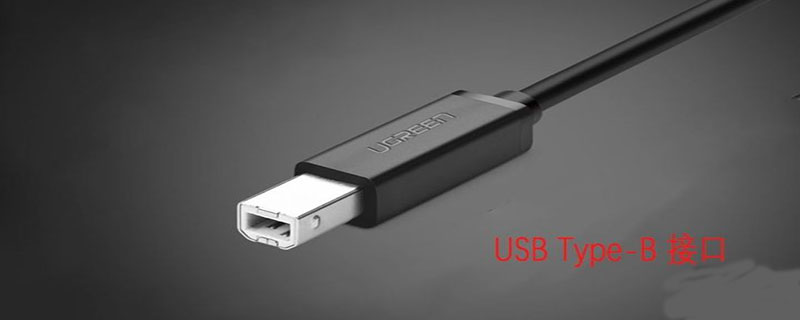What does type-b interface mean?

TypeB interface: Commonly used in printers and monitors with touch and USB interfaces, and has low daily use frequency. (Recommended learning: phpstorm)
Although Type-B just mentioned has very few application scenarios. But one of its offshoots, Micro B, was the interface standard that dominated most mobile devices before the arrival of USB-C. There are still many devices using MicroB in service, including very few new mobile phones.
MircoB is divided into MicroB 2.0 and MicroB 3.0. The difference in appearance is that MicroB3.0 is based on the 2.0 interface and has a wider interface. The MicroB 2.0 cable can be plugged into the MicroB 3.0 port, but not vice versa.
MicroB 2.0, which has a narrower interface, is USB2.0 speed and is common in most Android and WP mobile phones in 2014 and before, as well as in very few current brands of mobile phones.
USB Type-B connectors are used in large devices, most commonly printer devices, and since these are relatively large connectors, they are rarely seen in portable consumer devices.
There are two main versions of USB Type-B, the first is a square USB Type-B connector, usually used for USB 2.0 or lower. The second is the USB Type-B connector, typically used with USB 3.0 or higher.
In addition, the compatibility of USB Type-B connectors with different specifications is very tricky. Although the USB2.0 Type-B connector can be backward compatible with USB 1.0, it may not be compatible with some USB Type-B connectors of USB 3.0. B port is forward compatible.
The USB Type-B port used for USB 3.0 was later modified to be backward compatible with USB 2.o and USB Type-B interface connectors.
In addition to different form factors, USB Type-B connectors for USB 3.0 usually come with a blue insert.
The above is the detailed content of What does type-b interface mean?. For more information, please follow other related articles on the PHP Chinese website!

Hot AI Tools

Undresser.AI Undress
AI-powered app for creating realistic nude photos

AI Clothes Remover
Online AI tool for removing clothes from photos.

Undress AI Tool
Undress images for free

Clothoff.io
AI clothes remover

Video Face Swap
Swap faces in any video effortlessly with our completely free AI face swap tool!

Hot Article

Hot Tools

Notepad++7.3.1
Easy-to-use and free code editor

SublimeText3 Chinese version
Chinese version, very easy to use

Zend Studio 13.0.1
Powerful PHP integrated development environment

Dreamweaver CS6
Visual web development tools

SublimeText3 Mac version
God-level code editing software (SublimeText3)

Hot Topics
 1393
1393
 52
52
 1206
1206
 24
24


